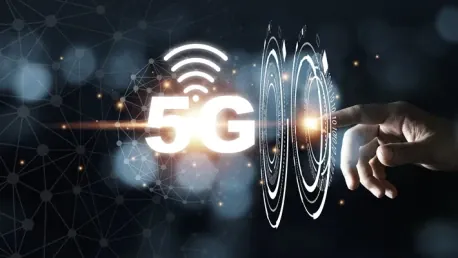The pivotal transition from 4G to 5G represents a revolutionary leap in cellular technology, presenting businesses with a critical decision: to either maintain the status quo or innovate their connectivity approach. This decision holds broader implications, as it lays the groundwork for the eventual adoption of 6G, which promises to bring even more advanced capabilities to the forefront of technological progress.
The Disparity in 5G Adoption
One of the prevailing perceptions about 5G is that it has fallen short of its promises, particularly in Western countries. Unlike their counterparts in China, Japan, and Singapore, these nations have primarily focused on updating their existing systems rather than undertaking a full-scale replacement of old infrastructure with new 5G technology. As a result, the uptake and utilization of 5G have been less than optimal in these regions.
In stark contrast, countries that have embraced a comprehensive infrastructural overhaul have showcased the potential of 5G. By adopting a full-scale replacement approach, these nations have achieved higher uptake and better utilization of 5G, demonstrating the benefits of comprehensive upgrades. This strategy not only enhances connectivity but also sets a strong foundation for future technological advancements.
Misalignment Between Infrastructure and Usage
Despite notable advancements in infrastructure, telecommunications companies in Western countries have yet to fully capitalize on 5G’s potential. A significant issue has been the lack of foundational 5G use cases at the enterprise level, which has limited the benefits of 5G to merely faster data speeds. This misalignment between infrastructure capabilities and actual usage has hindered the full realization of 5G’s transformative potential.
Enterprises often prefer to rely on Wi-Fi over 5G, driven in part by the incompatibility of their existing systems and devices with 5G technology. This reliance on Wi-Fi highlights the need for a comprehensive modernization of both the workforce and broader ecosystems. Updating these systems to be compatible with 5G technology is essential for businesses to fully harness the capabilities and benefits that 5G offers.
Investing in 5G: A Strategic Move
In light of these challenges, it is imperative for businesses to consider investing in 5G now as a strategic move. By doing so, organizations can mitigate future roadblocks and leverage the benefits of a distributed infrastructure. A distributed 5G ecosystem allows businesses to reduce their dependency on telecom providers and manage localized distributions more effectively. This approach also positions companies for a smoother transition to 6G.
6G is expected to build on 5G capabilities with enhanced automation driven by artificial intelligence (AI). By proactively adapting to 5G technology, businesses can ensure that their infrastructure is prepared for this transition. This forward-thinking approach will enable organizations to capitalize on the advanced capabilities and efficiencies that 6G will bring.
Security and Implementation Challenges
Integrating 5G into organizational operations comes with its own set of challenges, particularly from a security perspective. The first step in addressing these challenges involves assessing current applications connected by cellular networks, ranging from billboards to vending machines, to understand their compatibility with 5G. Many organizations will need to invest in upgrading their technology to ensure compatibility with 5G.
In addition to upgrading technology, building technical expertise among staff is crucial. Howe recommends starting with small, isolated 5G projects internally to bridge knowledge gaps and build the necessary technical expertise. These smaller projects can serve as valuable learning experiences, allowing organizations to develop the skills and knowledge needed to effectively implement and manage 5G technology on a larger scale.
Proof of Concept in Controlled Environments
A practical use case for 5G involves transitioning to a private 5G network in environments where traditional Wi-Fi may be impractical, such as factory settings. Implementing 5G in a controlled environment allows businesses to demonstrate the technology’s cost-efficiency and simplicity before scaling it enterprise-wide. This approach provides a valuable proof of concept and allows organizations to refine their 5G deployment strategies.
Addressing security concerns is paramount during this transition. Implementing 5G in isolated and segmented environments helps protect legacy infrastructure from potential threats. This phased approach not only ensures security but also allows businesses to gradually integrate 5G technology into their operations, minimizing disruptions and ensuring a smooth transition.
Zero Trust Architecture for Security
The adoption of a zero trust architecture is crucial for securing and managing newly integrated 5G systems. This approach ensures comprehensive security oversight, mitigating the risks associated with interconnecting older systems with new technologies. By continually verifying and validating all users, devices, and connections, zero trust architecture helps maintain a strong security posture.
Such security oversight is essential for organizations as they embrace new connectivity advancements. By implementing zero trust principles, businesses can ensure that their 5G deployments are secure, resilient, and capable of withstanding evolving cyber threats. This proactive approach to security will be vital as organizations prepare for the future of connectivity.
Laying the Foundation for Future Scalability
The significant shift from 4G to 5G marks a revolutionary advancement in mobile technology, posing a crucial decision for businesses: to either stick with the current system or transform their connectivity strategies. This choice is of paramount importance as it sets a precedent for the future embrace of 6G, which is expected to introduce even more sophisticated capabilities and front-line technological advancements. The progression from 4G to 5G isn’t just about faster internet; it’s about unlocking new potentials in sectors like healthcare, manufacturing, and entertainment through enhanced speed, reduced latency, and increased connectivity. As we look forward to 6G, businesses need to consider how adopting 5G now can strategically position them for future innovations. This upcoming 6G evolution will likely bring unprecedented changes and opportunities, making it essential for businesses to strategically plan their approach to technology upgrades. In essence, firms must weigh the long-term benefits of early 5G adoption against the consequences of remaining stagnant in a rapidly advancing technological landscape.









